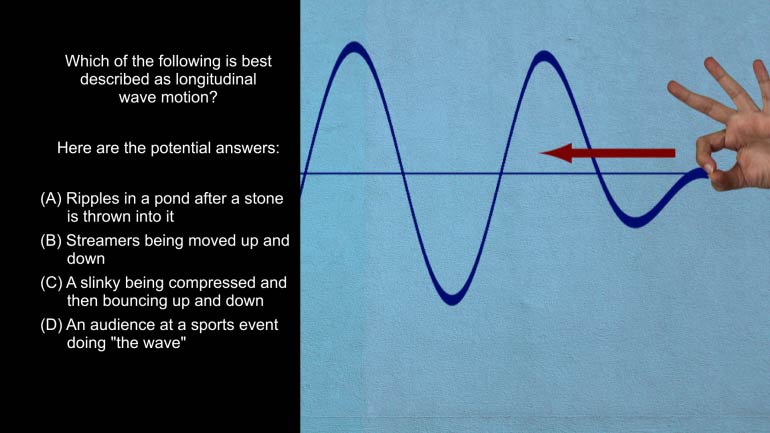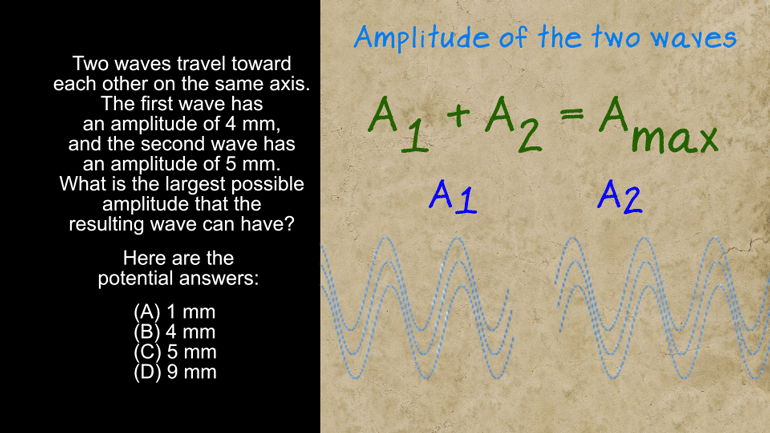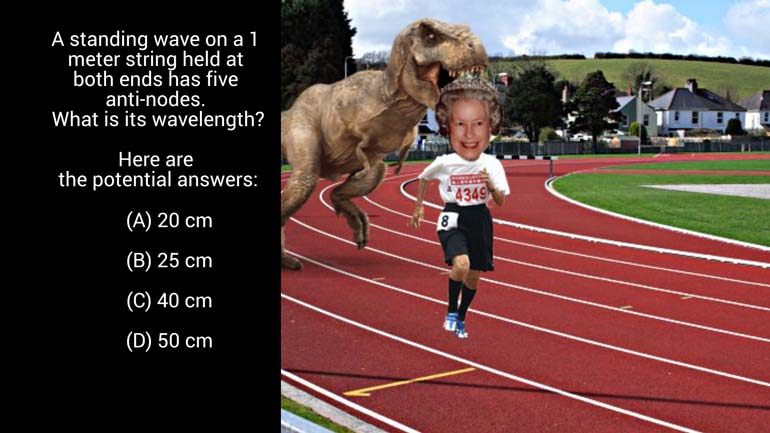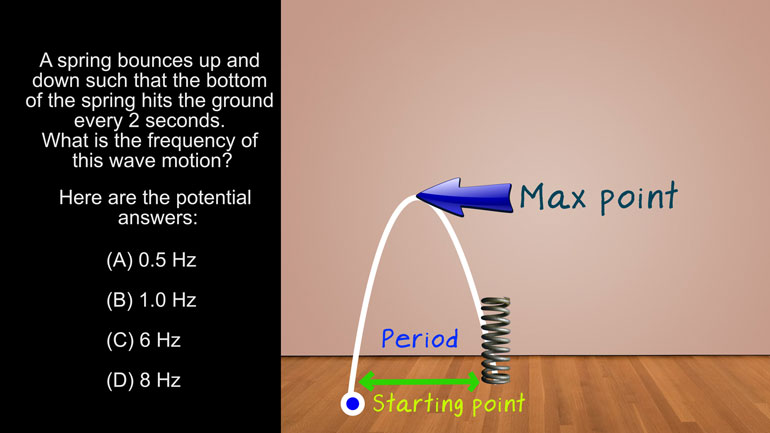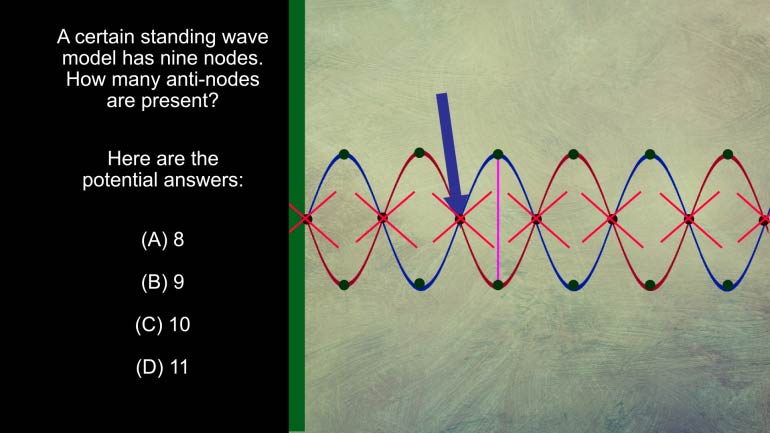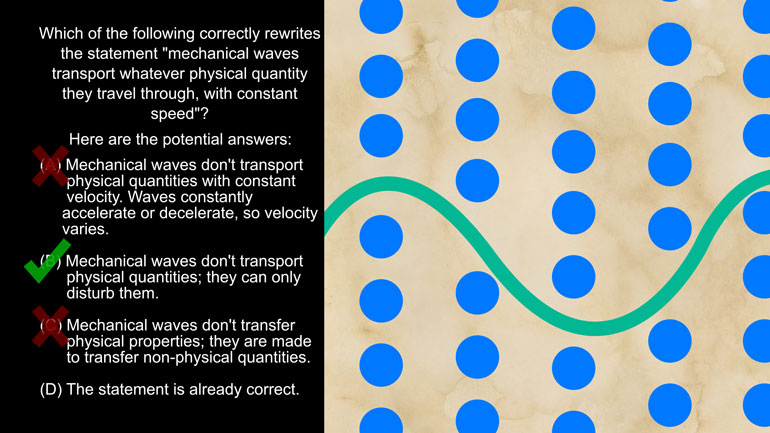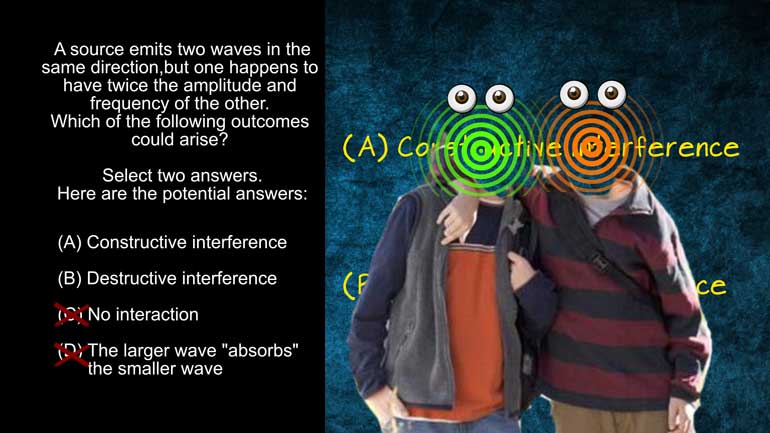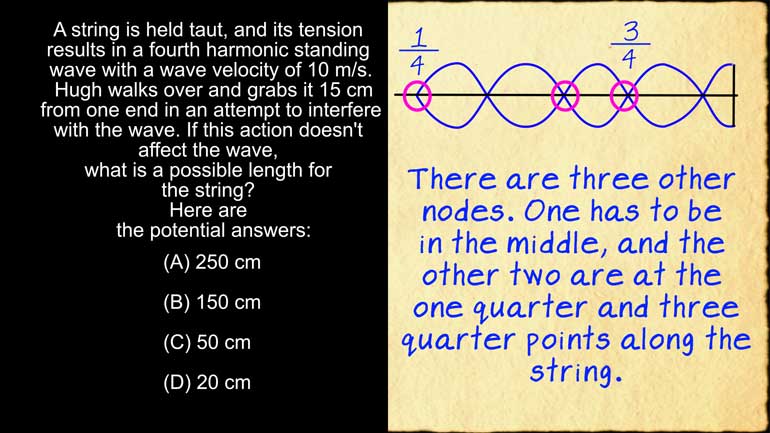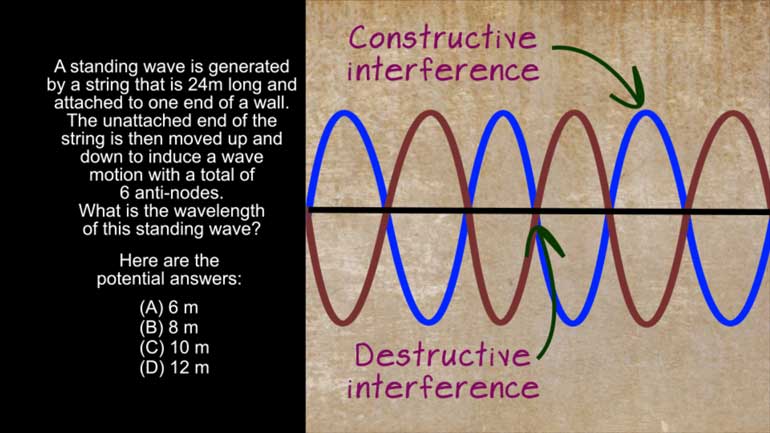ShmoopTube
Where Monty Python meets your 10th grade teacher.
Search Thousands of Shmoop Videos
Waves Videos 15 videos
AP Physics 1: 2.3 Waves. Which of the following is best described as longitudinal wave motion?
AP Physics 1: 2.1 Waves. What is the largest possible amplitude that the resulting wave can have?
AP Physics 1: 2.5 Waves 4 Views
Share It!
Description:
AP Physics 1: 2.5 Waves. Which other quantities need to be measured?
Transcript
- 00:00
Thank you We sneak then here's your smoke du jour
- 00:05
brought to you by wave velocity which is usually noticeable
- 00:08
when we're leaving a coffee shop Hang out Yeah that
- 00:12
all right A group of students is tasked with determining
- 00:15
the velocity of a standing wave generated by a string
Full Transcript
- 00:18
They're given the length of the string which other quantities
- 00:22
that they need to measure select two answers aren't here
- 00:25
The options period number two All right well the key
- 00:30
to answering this question figuring out the right equation to
- 00:33
use we need an equation that includes velocity is a
- 00:36
variable So the equation to find the wavelength two times
- 00:40
length divided by the number of anti nodes Just one
- 00:43
more velocity Well what about frequency Frequency equals the number
- 00:47
of anti nodes times velocity divided by the length times
- 00:50
two All right yeah That'll work there's that little bee
- 00:53
way already need to know the length of the string
- 00:56
So the only other things we need would be the
- 00:58
number of nodes which is answer beams so that's one
- 01:02
of our correct choices But the other choices period amplitude
- 01:06
and distance between anti nodes All those aren't involved in
- 01:10
this equation well we know that the frequency is the
- 01:13
reciprocal of the period so if we know the period
- 01:16
then we can figure out the frequency right So the
- 01:19
other correct answer is a period when we're faced with
- 01:22
questions like this We'll have to scroll through our equation
- 01:25
friends list to get the right answer but this is
- 01:27
the kind of abstract thinking that really defines what a
- 01:29
physicist does It's not just about math asked sheldon Math
- 01:35
gets as from point a to point b but a
- 01:37
lot of the time physics is about being at point
- 01:39
a and figuring out where point b is in the
- 01:42
first place Don't get us wrong though There still gonna
- 01:44
be math If we need help focusing a triple espresso
- 01:47
might do the Job 3 times 1 espresso thats matt
- 01:50
Of course that might just make us vibrate so much 00:01:52.81 --> [endTime] We turned into a standing wave ourselves No
Related Videos
AP Physics 1: 1.4 Waves. Which of the following is technically true for Max as he stands at the edge of oblivion?
AP Physics 1: 1.4 Changes and Conservation Laws. Find the current across R2.
AP Physics 1: 2.4 Changes and Conservation Laws. Which of the following circuits should the students use?
AP Physics 1: 1.5 Waves. What can possibly occur when the two waves reach each other?
AP Physics 1: 2.2 Waves. What's the wavelength of this standing wave?

